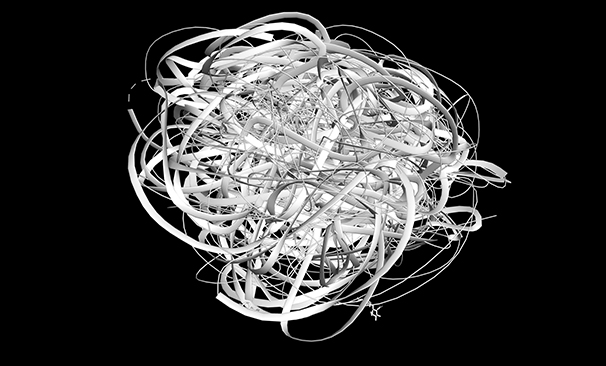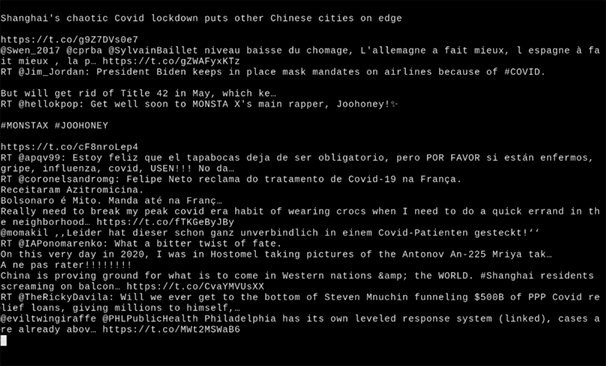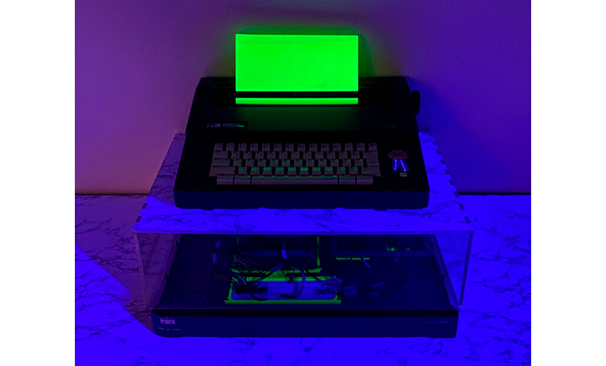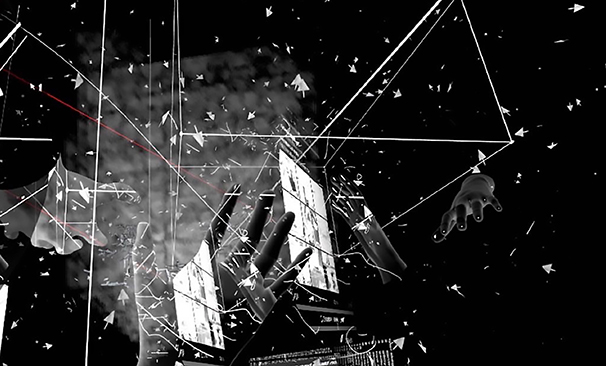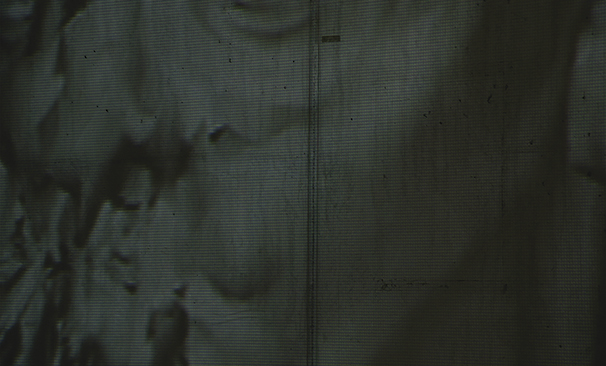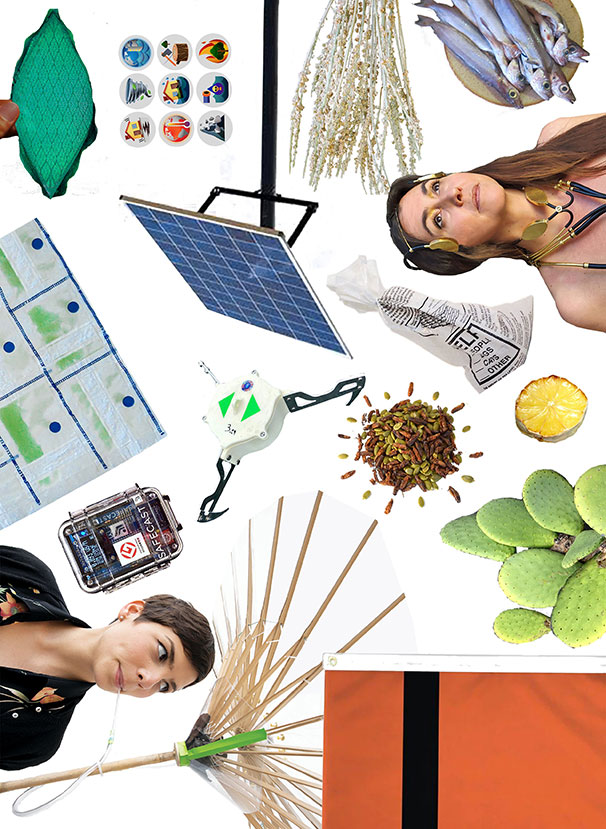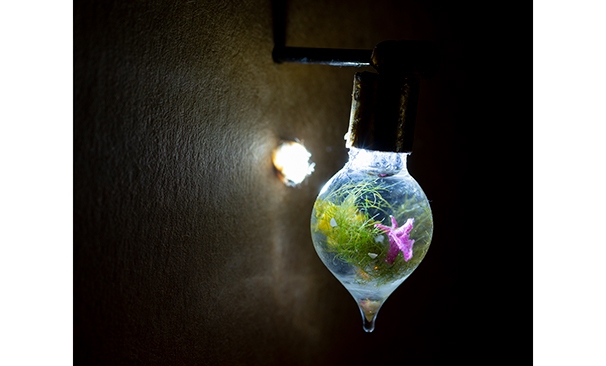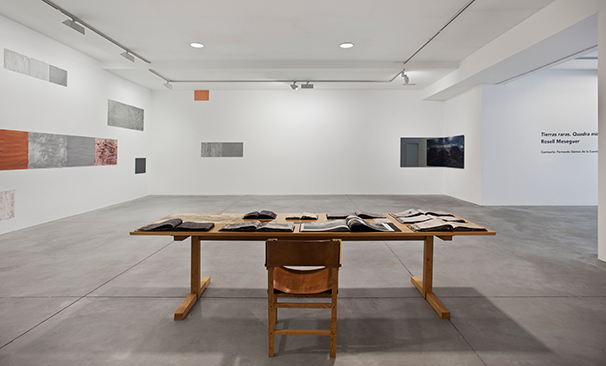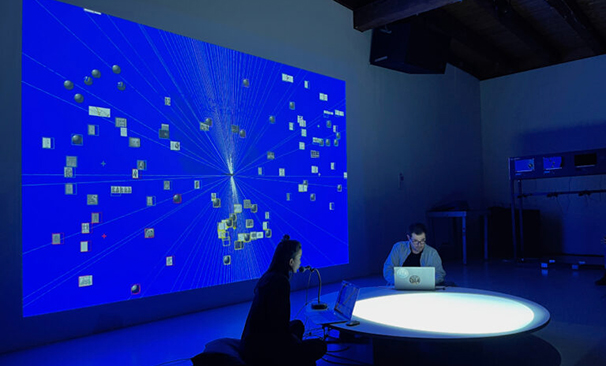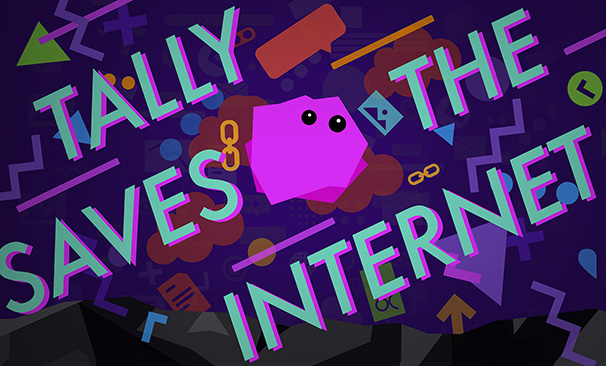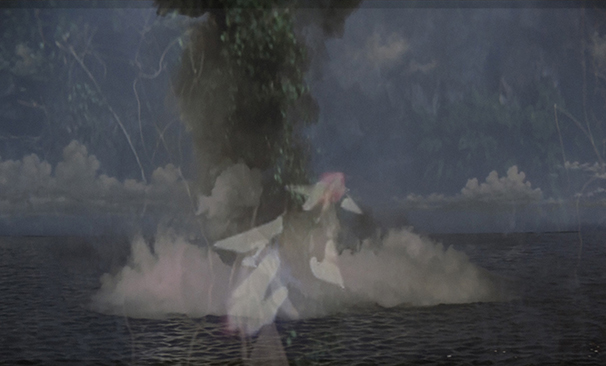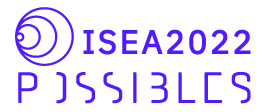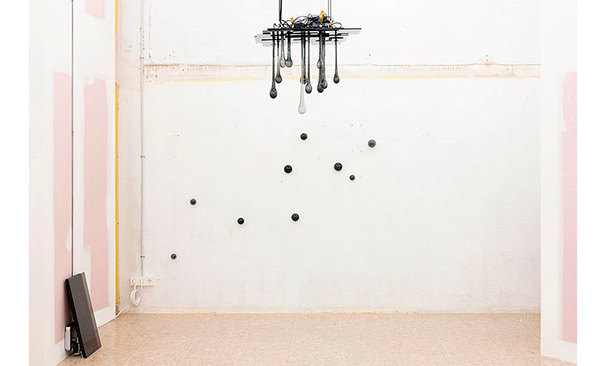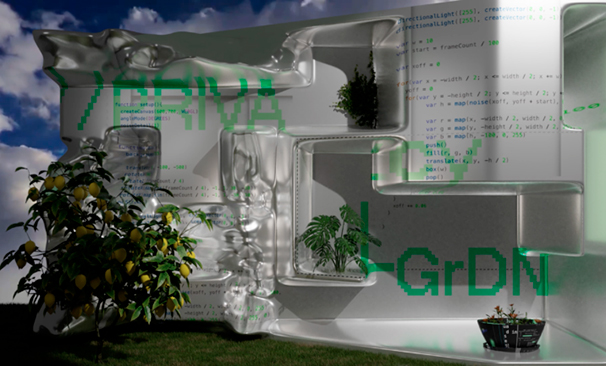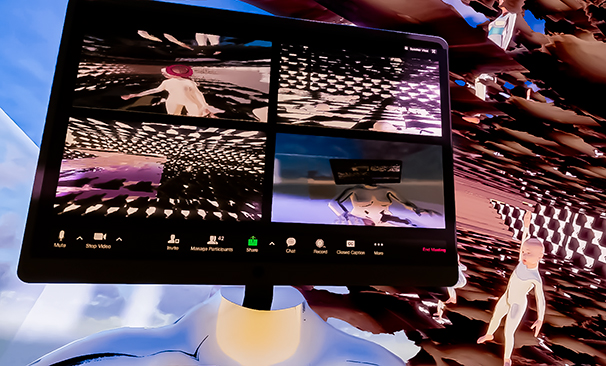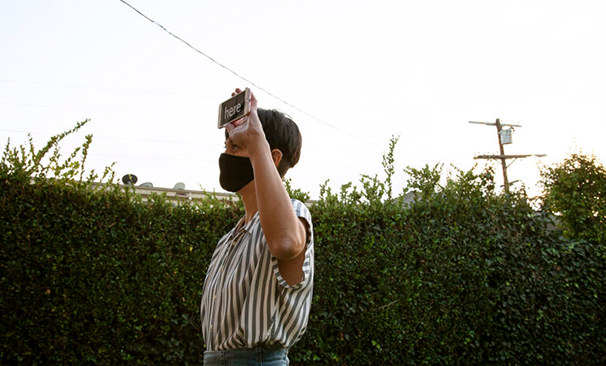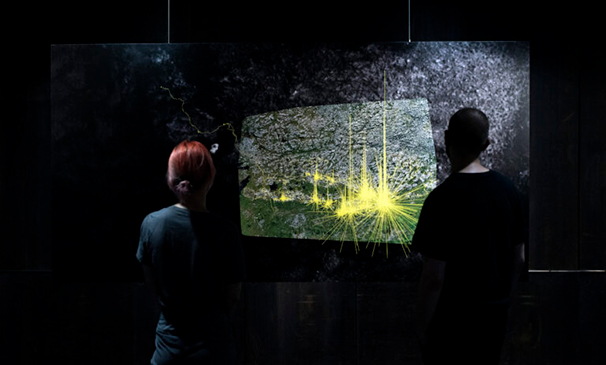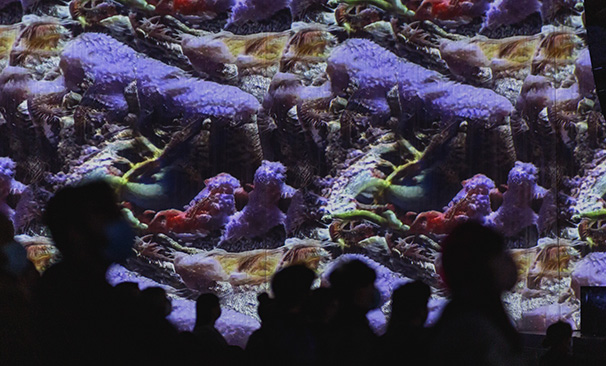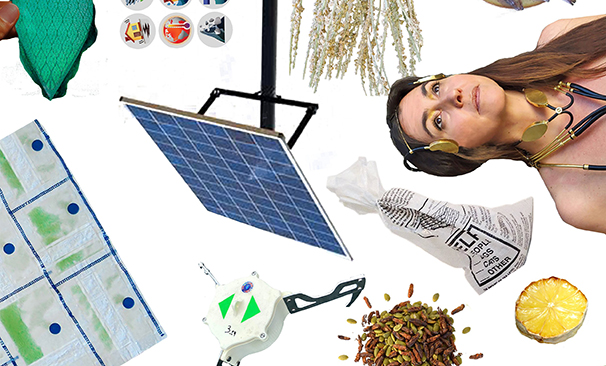What are you looking for?
You might be looking for...
Contraimaginaris Postpandèmics
The group Contraimaginaris Postpandèmics, in residence at Santa Mònica during 2022, explores the hegemony of the world view imposed by the political regime of the pandemic, and what counter-world views are resisting. Our perspective, directed at the exhibition "Irruption", creates a unique route through the exhibition, which we propose to you here. Along the way, we aim to overrun the hyperabundant, immaterial and ultraexpert narratives based on technology/digitality, follow the trail left on the ground by the digital complex, confront the cruel gaze of Artificial Intelligence in its gender, race, class, and ability bias, disprove the false acceleration of time simulated by an aesthetic of superproductivity, and acknowledge the only-too-real exhaustion this causes us. At the heart of the exhaustion, perhaps there is a negative power and a radical antisystem force. Having betrayed the world of monitored boxes, we propose listening to the stories of individual and collective bodies, multiple, non-linear times, forms of transcoding, interconnection and interaction that point towards ways to live well. And with them, cosmo-situated subjectivities or forms of enunciation.
Digital is not virtual, it is territory.
Pieces
Rosell Meseguer, Quadra Minerale – Rare Earths ![]()
In an assembly of objects, maps, books, photographs and minerals, this piece takes us to that connection, to explore uncomfortably (and necessarily) the relationship between use and plunder that we have established with everything around us.
The materiality that underlies the production of digital technologies, their globalisation and speed, becomes invisible when they are used. Looking beyond the screen, beyond the code, penetrating down to the metal, following the cables, the production chains, crossing oceans, reaching deserts and mines. Understanding the extractivism that is a necessary part of technology. Beside a sea of data, a sea of pollution, of planned obsolescence, mountains of metal, plastic and shattered lives, under a sky saturated with air waves, besieged by satellite junk in uncontrolled orbits.
Being aware of all this, embracing technologies from critical viewpoints belongs to the new world views that are possible, that relocate our dreams of communication within a territorial and corporeal relationship in reciprocity and balance.
Digital is not virtual, it is territory.
Nikolas Gomes, Concerto para Piano e Pandemia ![]()
The black room surrounded by tweet lyrics that run like wallpaper. It is like entering one of those countless electronic music rooms that many of us have been to. One cannot help thinking of Mark Fisher and his capitalist realism and that state of being unable to think of futures that are radically different from the present that technocapitalism has induced us to feel and believe.
This spectral journey that invites us to experience this piece from materialities that are removed (?) from our ordinary lives (a canvas of crude digital signs) but which invoke in our bodies the possibility of collective dancing. The machine, as in techno, is no longer the unchanging enemy, but a door that can be hacked, transformed into a sensitive space, exploring radical subjectivities, in a collective feeling-thinking.
In Contraimaginaris Postpandèmics, our interest lies in how to overcome those narratives that fortify technology and digitality as something that is unreachable, laying bare the materiality of the radical extractive machinery that sustains it, breaking its unattainable expertise.
A plant, a mug, a screen/camera, a keyboard. The world that Unreal Window shows us is a confined environment and a narrative produced from confinement with AI. It is a world in a loop, peopled with white bodies, divided into boxes, saturated with screens with which we monitor each other in our respective boxes, and fluid, ghostly images that invoke a depopulated outside. The characteristic voice of AI (in this case based on James Stewart in the movie Rear Window), of a white, mature, English-speaking man, with a tone that is somewhere between melancholic and ruthless and senile, repeats "I WISH I WAS CREATIVE". After creating improvised works on the racist, anti-Chinese outbursts that accompanied the first Covid-19 wave in the United States (and many other places), Chanee Choi now sifts through the dregs of the pandemic. Just one month ago, we recommended to students on the course "Image-object-space: cross-cutting perspectives", a sharing of images of what could be a post-pandemic space, and we also found boxes, graphic saturation, damaged relationships, exhaustion. And as in Rear Window, while we gaze in perplexity, we know that a crime is being committed.
Nooroa Tapuni, Waiting for Other ![]()
The drawing portrays realistic images that include different times and changing forms, different states of being that are both concurrent and interrelated. With her interactive drawing, Tapuni delicately shows a chained body that, when it is perused (sliding the gaze on the exhibition room screen, sliding the finger on a mobile device), changes from black to white, contains stories of slavery, perhaps freedom, new chains, and others (a map?) that my positionally fixed ignorance prevents me from understanding. There are chains, and there is flight; there is skin, and there are stories of many people chained and transported like goods. All of this inside an individual, present body, which is a collective body made of multiple, non-linear times. In Tapuni's words, akapapa, whakapapa, they refer to the cosmology of interconnection and continuity; tu ke (to stand in difference), to the negative stereotype applied to brown skin, and te’ta’i, (to stand as an(other) as in ancestor) to the characteristic form of presence of ancestrality. By bringing her indigenous viewpoint with respect to cybernetics and digitality, she redefines connection, machine, transcoding, interaction. She redefines self, ancest*rs, oth*r, difference, temporality.
Jennifer Gradecki + Derek Curry, Infodemic ![]()
Time and its fictional acceleration by the images of neoliberal capitalist productivity (although time as such is a fiction) and what it does to our world views is one of the concerns that Contraimaginarios Postmodemismo addresses as a research group, as a contemporary form of the Marxist "alienation", which refers to workers' separation from the product of their own labour. This acceleration has even taken with it certainties constructed by modernity such as the single, only truth, and we live in a time-space where neoliberal fake news is the new truth and influencers are our leaders in the troubled seas of fear of the future. So today, we live in the kingdom of uncertainty with fear and we do not see its potential.
Infodemic translates this sea of contemporary narratives, which emerge unfiltered, unquestioned, into images, even into unfocused, overlapping moments. We are interested in exploring the possibility opened by uncertainty to embrace the invariable and innumerable possibility of mutations and knowledge as the constant infinitude.
Xuanyang Huan, Imaginary Sunset ![]()
The Contraimaginaris Postpandèmics research group studies how the (post?)-pandemic affects our world views. One of the issues that we encounter time and time again is that of dissociation, a psychological term that refers to a distancing from reality. A disconnection of senses, emotions and thoughts, often triggered by a sensation of being overwhelmed by them. When I climb the stairs that lead to Imaginary Sunset, and I find this screen propped up like a mobile phone on the landing, I immediately sit down on the steps. The rhythm of the sequence of soundless images relaxes me, empties me and makes me aware of the gold, pink and red reflections that the LEDs of this synthetic sunset project onto my skin. I enter a state of contemplation, I become aware of the place and my body in it, while I watch sunsets that are the product of fusing thousands, perhaps millions of images of sunsets taken during lockdown. Again the crepuscular sensation of exhaustion.
I allow the result of the datification to become contemplation. If I give in to the tiredness, if I allow this, I can find a different strength inside it.
What does it mean to situate oneself, to understand a possible place of enunciation at cosmos level? What does the future mean on a cosmological scale? Or do we need another word? When we look at space, we are looking at the past. When we project its future, we are contemplating a slow, cold extinction. The piece's three sections narrate the most universal prospect: the solar system will be extinguished, all the galaxies, even the last black holes will evaporate. And subjectively we have looked inside our atoms, and they have spoken to us of the beginning of the universe, the quantum fields we occupy every second, and the end of time. If the universe's epic is a long evaporation of everything, marked by violent births of stars and galaxies whose moribund dust is the substance of our bodies here and now, and whose colours are memories, how should we understand the colours we see and the atoms we can touch? What does it mean to dream? To imagine?
The group Contraimaginaris Postpandèmics is one of the research groups in residence at Santa Mònica in 2022. It is made up of Jesús Arpal Moya (La Caníbal cooperative), Nancy Garín and Antoine Silvestre. Throughout 2022 they listen, study, propagate, problematise and hypothesise alternative imaginaries to the official narratives produced in the field of representation (cultural, social and political) of the covid 19 crisis and the prolonged pandemic (post-pandemic).
They are interested in the multiple displacements, gaps and adjustments provoked by the pandemic, as lights for new political imaginaries that empower possible futures. What are the differences between the pandemic as a persistent narrative and covid-19 as a historical event? What space is there for the self-management of history/s, health and knowledge in the narrative of the pandemic? Postcovid, precovid, anticovid, subcovid, supercovid, simcovid? What imaginaries opened up during the pandemic context remain or are disappearing from collective memories? Can we trace in this erasure some changes in the dialectic between local regime and global hegemony? It is an artistic and non-academic research, so they alternate different tactics to feel-think-share-act. They meet on Mondays from 5pm in the Mòniques space at Santa Mònica.
Other itineraries you can do:
- On monsters, ghosts, zombies and other terrifying beings, Paula Bruna and Marta Gracia Valladares ![]()
- (Un)wanted Spacetimes, Daphne Dragona and Jara Rocha ![]()
- A counter-catastrophic gaze, Joan Yago and Enric Puig ![]()
- Technologies for the celebration of multiple ends, Paz Peña O. ![]()
- States of emergency: art in times of pandemic, Israel Rodríguez Giralt ![]()
- An enemy like the future, Ian Alan Paul ![]()
